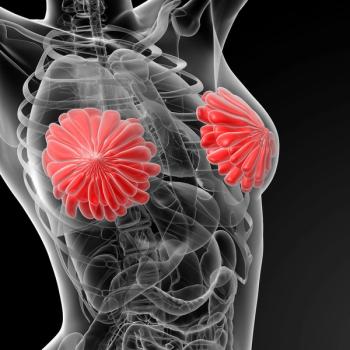
Oncology NEWS International
- Oncology NEWS International Vol 7 No 12
- Volume 7
- Issue 12
Long-Term Adjuvant Tamoxifen Urged for Low-Risk Breast Cancer
FLORENCE, Italy-Long-term follow-up of node-negative postmenopausal breast cancer patients has shown that using tamoxifen (Nolvadex) as an adjunct to breast-conserving surgery and postoperative radiotherapy markedly improves event-free survival in these low-risk women.
FLORENCE, ItalyLong-term follow-up of node-negative postmenopausal breast cancer patients has shown that using tamoxifen (Nolvadex) as an adjunct to breast-conserving surgery and postoperative radiotherapy markedly improves event-free survival in these low-risk women.
The positive effect of avoiding salvage mastectomies, re-excisions, and contralateral breast surgery justifies the use of tamoxifen even in the low-risk group with an expected 10-year survival rate of 90%, Kristina Dalberg, MD, of the Karolinska Hospital, Stockholm, Sweden, said at the First European Breast Cancer Conference. The 432 study subjects comprised a separate stratum of the more than 2,700 women enrolled in the Stockholm Adjuvant Tamoxifen trial. These largely estrogen-receptor (ER)-positive patients were randomized to receive either tamoxifen, 40 mg/day for a mean duration of 3.2 years, or no further treatment, and were monitored for a median follow-up period of 8 years.
Ten-Year Event-Free Survival
Ten-year event-free survival was 80% among women treated with tamoxifen, which was significantly greater than the 70% rate documented among control patients.
This benefit stemmed from a 60% reduction in the relative hazard of invasive or noninvasive ipsilateral breast cancer recurrence and a similar drop in the incidence of contralateral breast tumor development. Dr. Dalberg emphasized that the 3% 10-year rate of ipsilateral recurrence observed among tamoxifen-treated enrollees in the Stockholm study is one of the lowest reported to date.
Although there were trends suggesting a protective effect of tamoxifen against distant metastases and death due to breast cancer, the benefits failed to reach statistical significance.
The study investigators detected six cases of endometrial cancer among tam-oxifen-treated women and two cases in control patients.
The Stockholm results raise the question of whether low-risk women with node-negative, ER-positive breast cancer might be successfully managed with tamoxifen instead ofrather than in addition toadjuvant radiotherapy.
Articles in this issue
about 27 years ago
EORTC DCIS Study Confirms Recurrence Reduction With RTabout 27 years ago
James Cancer Center Joins NCCN Outcomes Databaseabout 27 years ago
Managed Care Sees Need for National Guidelines, Accreditationabout 27 years ago
Advisory Panel Recommends Approval of Vysis HER2 Testabout 27 years ago
Drinking Tea After Smoking May Reduce Oxidative Stressabout 27 years ago
Use Special Skills, Tools to Assess Pain in Children, Elderlyabout 27 years ago
Good Response Rates With Radiolabeled Anti-CD20 MoAB in NHLabout 27 years ago
Tobacco Industry Settles With StatesNewsletter
Stay up to date on recent advances in the multidisciplinary approach to cancer.

















































































